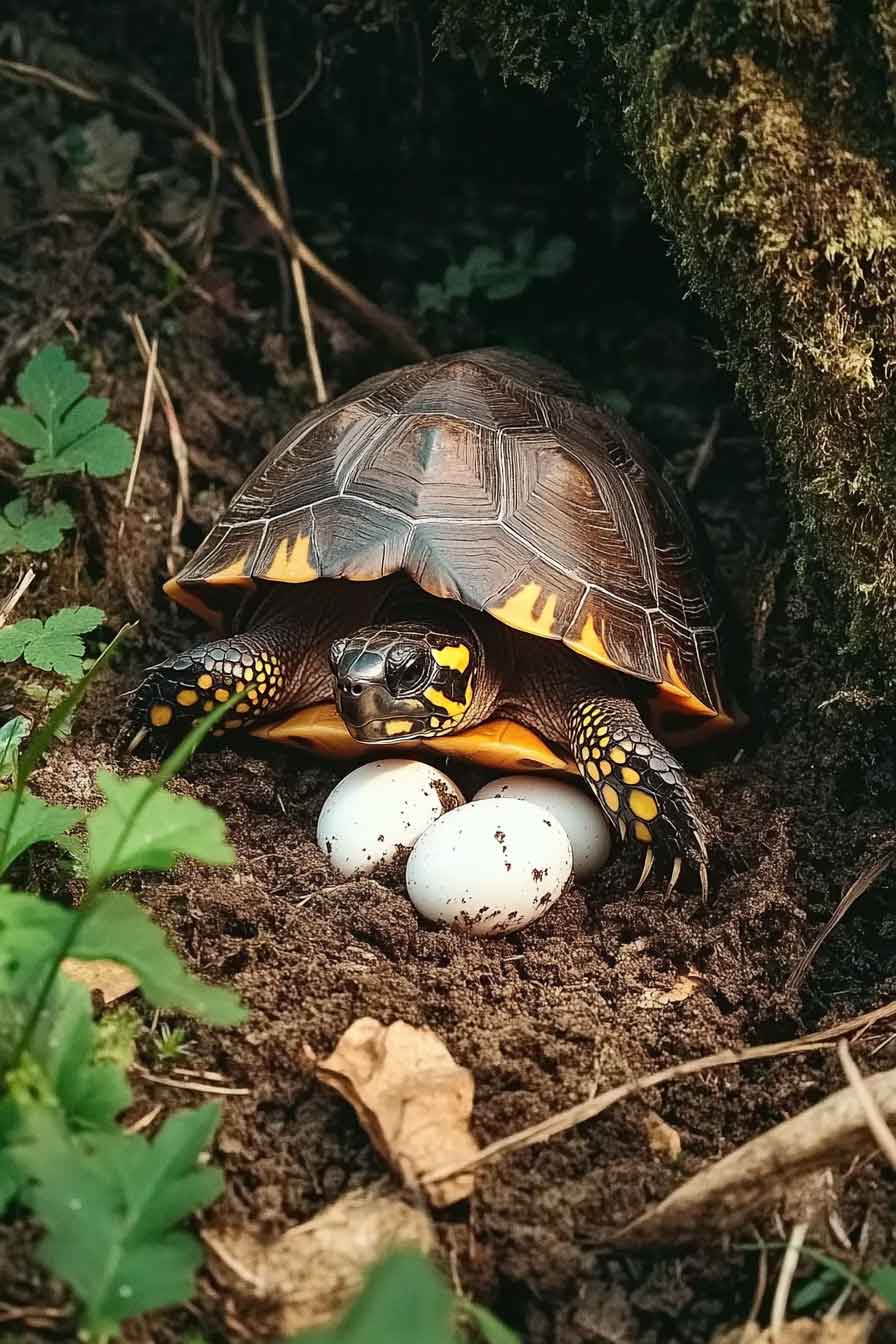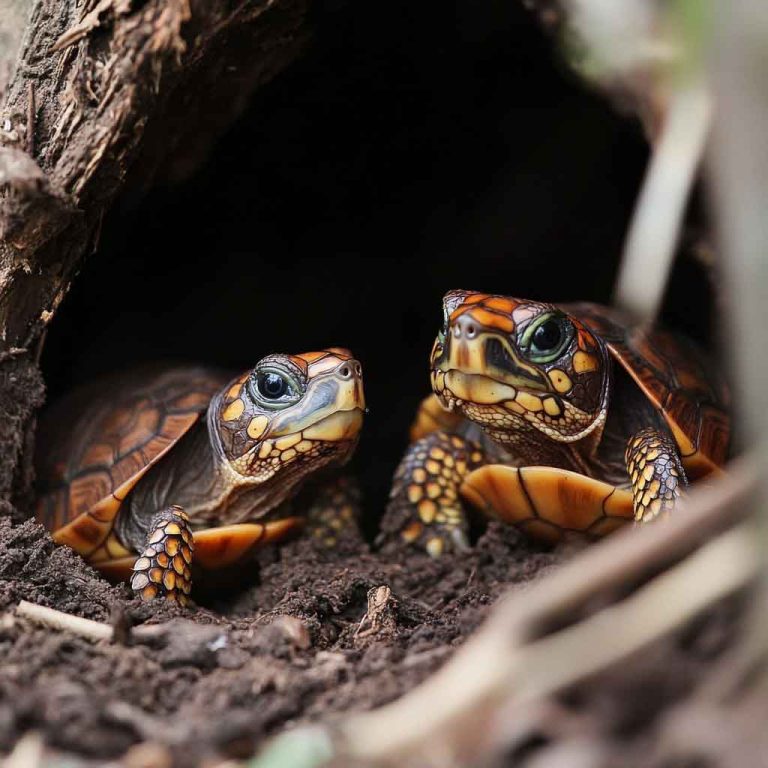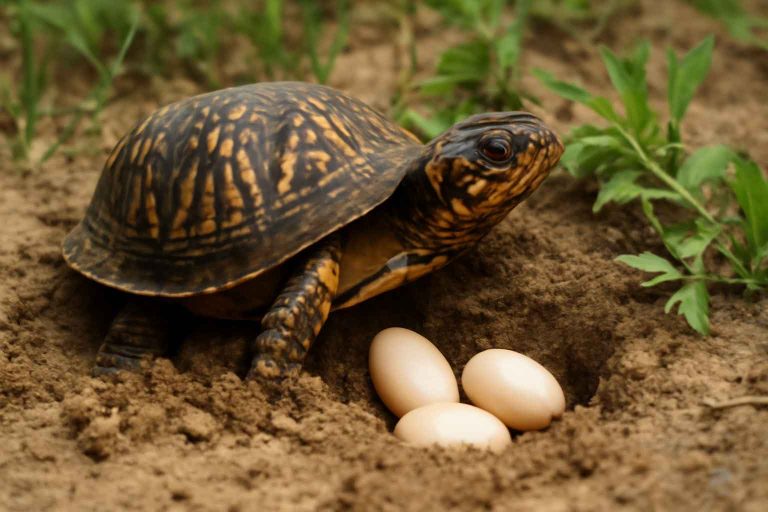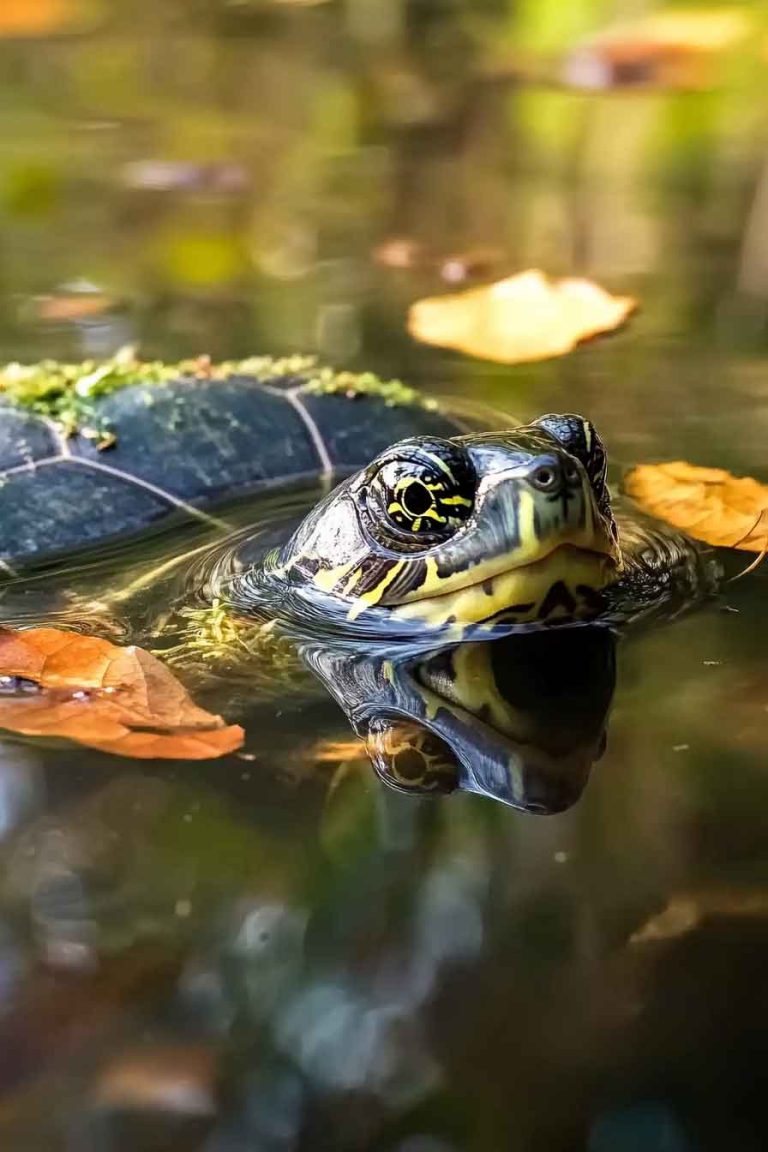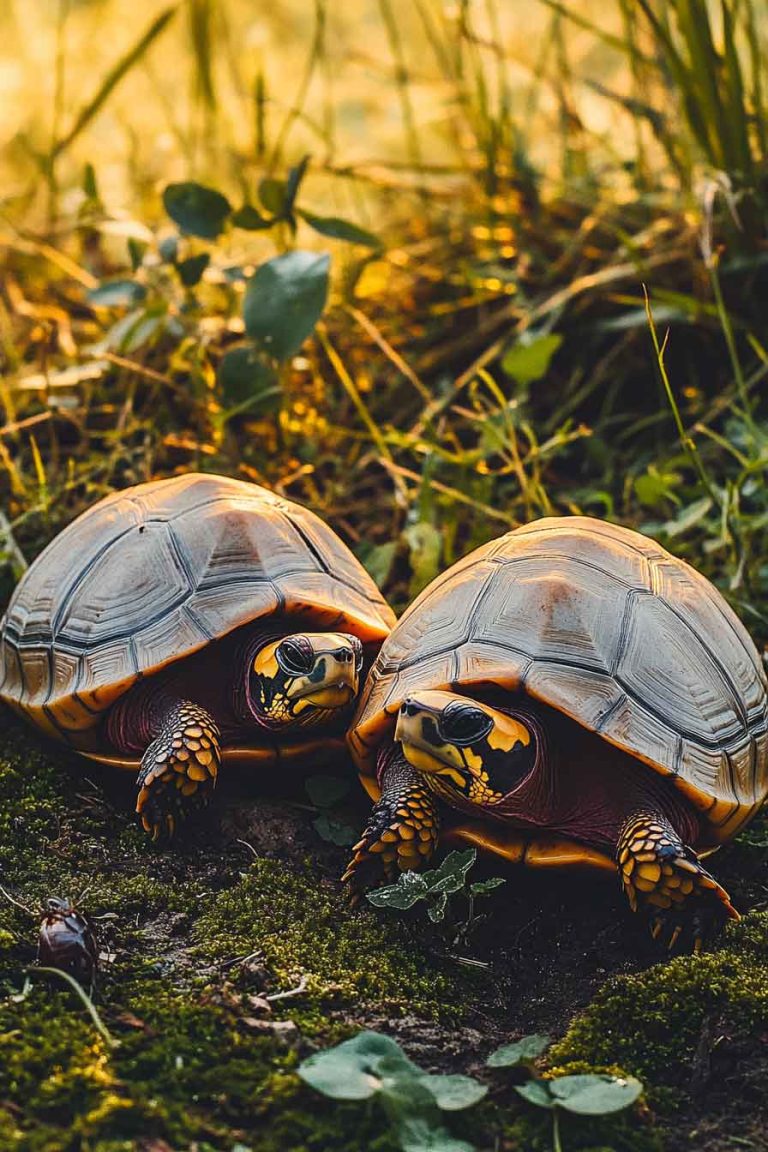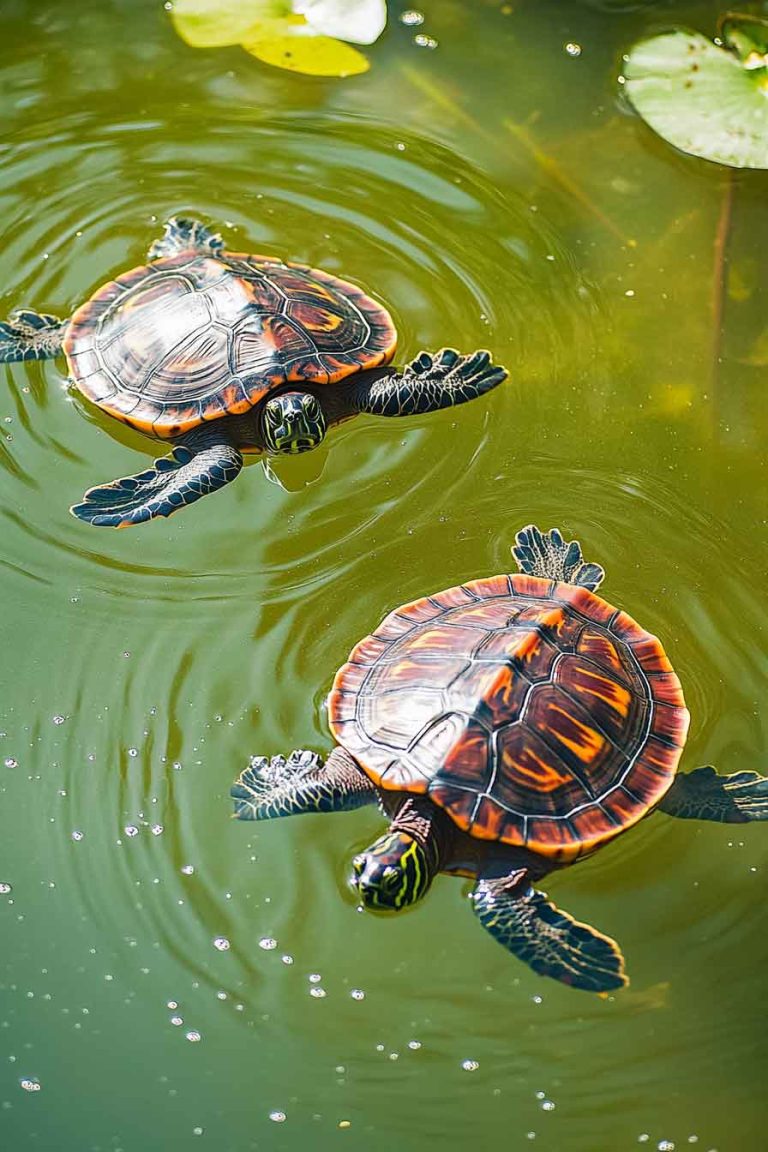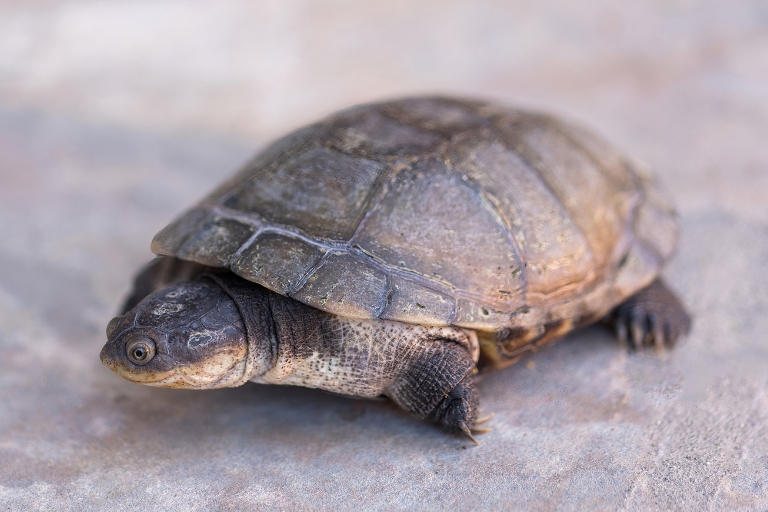How to Care for Box Turtle Eggs: Complete Do’s and Don’ts for Beginners
Hey there, turtle friend! If you have a girl box turtle, she’s going to lay eggs one day. When that happens, you need to know how to take care of those eggs. Don’t worry – I’m here to help you! I’ll show you everything you need to know. Box turtle eggs care guide: When your…
Hey there, turtle friend! If you have a girl box turtle, she’s going to lay eggs one day. When that happens, you need to know how to take care of those eggs. Don’t worry – I’m here to help you! I’ll show you everything you need to know.
Box turtle eggs care guide: When your box turtle lays eggs, you need to move them to a safe place. Keep them warm at the right temperature. Keep them moist but not too wet. Don’t move them around too much. Watch them carefully until the babies come out.
In this guide, I’m going to teach you all about caring for box turtle eggs. I’ll tell you what to do and what NOT to do. Let’s make sure those eggs grow into healthy baby turtles!
Contents
- Things You Should Do
- Things You Should NOT Do
- How To Know If Eggs Are Good
- When Do Eggs Hatch?
- Common Questions
- Final Thoughts
Box Turtle Eggs Care Guide: Things You Should Do
Let me walk you through the important steps I take to care for box turtle eggs. These tips will help your eggs stay safe and healthy!
1. Find Where She Laid The Eggs
The first thing I do is look for where my turtle laid her eggs. Once I find the spot, I put a small stick or flag next to it. This helps me remember where the eggs are. I don’t want to step on them by accident!
Your turtle might dig a hole in the dirt to lay her eggs. She picks a spot she thinks is safe. Sometimes it’s in a corner of her home. Sometimes it’s under a plant.
2. Leave Wild Eggs Alone
If your turtle laid eggs outside in nature, I say leave them there! Mother Nature knows best. The eggs will be fine in the wild if nothing bothers them.
The only time I move wild eggs is if they’re in danger. Maybe they’re near a road. Maybe other animals might eat them. If that’s the case, then yes – move them to safety. But if they look safe, let them be.
3. Move Eggs From The Turtle Tank
Sometimes your turtle lays eggs right in her tank. That’s not always the best place for them. Other turtles might step on them. The temperature might not be right.
When this happens, I move the eggs to a better place. I make a special nest box just for them. This keeps them safe and gives them the best chance to hatch.
4. Make Your Own Nest Box
You don’t need fancy equipment to care for turtle eggs. I make my own nest box, and it works great! Here’s what I do:
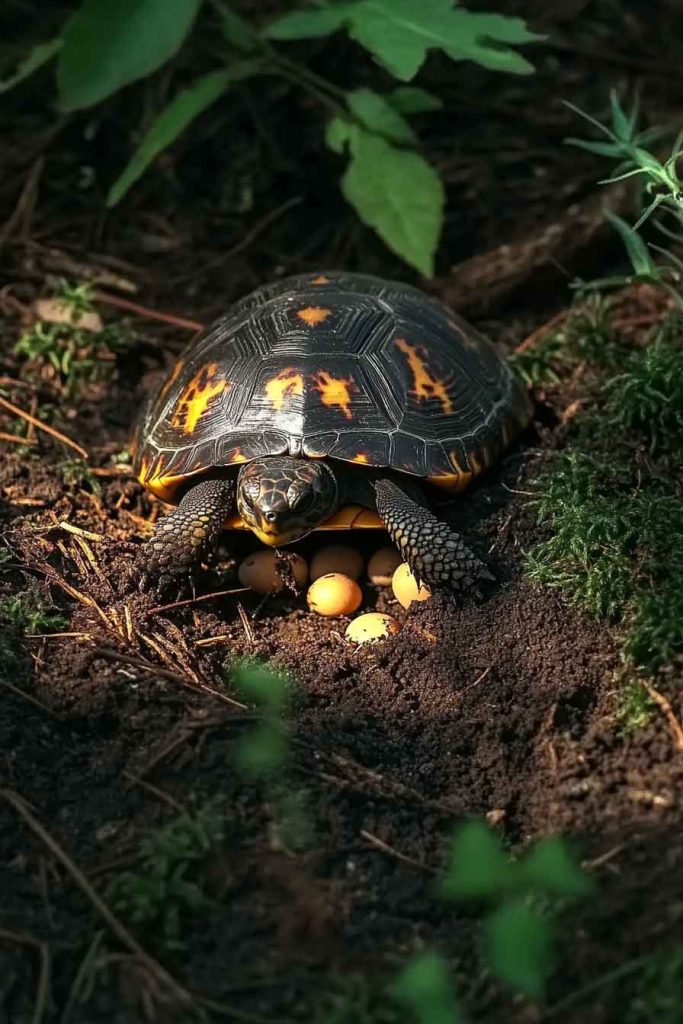
What You Need:
- A plastic container with a lid
- Peat moss or vermiculite (these hold moisture)
- A thermometer
- A heat lamp or heat mat
- A spray bottle with water
How To Set It Up:
- Fill the container halfway with moist peat moss
- Make small dips in the moss for each egg
- Put the eggs in the dips
- Close the lid (but leave a tiny bit open for air)
- Keep the temperature between 80-85 degrees F
- Keep the humidity around 80%
The moss should feel like a damp sponge. Not dripping wet. Not dry and crumbly. Just nice and moist.
5. Use A Real Incubator
If you don’t want to make your own nest box, you can buy a reptile egg incubator. These machines keep the perfect temperature and humidity all by themselves.
I like incubators because they do the hard work for me. They keep everything steady. That’s really important for turtle eggs. But they cost money. The DIY nest box works just as well if you watch it carefully.
6. Move Eggs VERY Carefully
This is super important! Turtle eggs are fragile. When I move them, I’m extra gentle. Here’s what I do:
- Mark the top of each egg with a pencil (draw a small X)
- Pick up each egg slowly
- Don’t flip or turn the egg
- Keep the X facing up
- Don’t shake or bump the egg
- Place it gently in the new nest
Why do I mark the top? Because the baby turtle inside is growing in a certain position. If you flip the egg, you might hurt the baby. The X helps me remember which side should stay up.
7. Watch The Eggs Every Day
Once the eggs are in their nest box, I check them every single day. I look for problems. Here’s what I watch for:
Good Signs:
- Eggs look white or cream colored
- They feel firm (not squishy)
- No bad smell
- A little moisture on the moss
Bad Signs:
- Eggs turn yellow or brown
- Mold growing on the shell
- Eggs feel soft and mushy
- Bad rotten smell
- Eggs look dried out
If the moss looks dry, I spray it lightly with water. But I never spray the eggs directly! I spray the moss around them.
8. Keep Temperature Just Right
Temperature is SO important for turtle eggs. If it’s too hot or too cold, the babies won’t grow right. Some might not hatch at all.
I keep my nest box between 80-85 degrees F. I check the thermometer twice a day – once in the morning and once at night.
Here’s something cool: The temperature decides if the babies will be boys or girls! Warmer temps make more girls. Cooler temps make more boys. Isn’t that neat?
9. Keep Humidity Just Right
Humidity means how much moisture is in the air. Turtle eggs need it moist but not soaking wet.
I keep humidity around 80%. How do I know? I can buy a humidity meter at the pet store. Or I just make sure the moss stays damp.
If the air gets too dry, the eggs will dry out. The babies inside might die. If it’s too wet, mold will grow. That’s bad too.
10. Be Patient And Wait
This is the hardest part! Turtle eggs take a LONG time to hatch. We’re talking 70 to 90 days. That’s almost 3 whole months!
I know it’s tempting to pick up the eggs and check them. But don’t do it! Leave them alone. Let nature do its thing.
Every few days, I peek into the nest box. But I don’t touch the eggs. I just look with my eyes.

11. Don’t Take Out Babies Right Away
After months of waiting, the eggs finally crack open! Tiny baby turtles come out. It’s so exciting!
But wait – don’t grab them yet! When I see a baby turtle, I let it stay in the nest box for 1-2 more days.
Why? Because baby turtles come out with a yolk sac attached to their belly. This is like a little lunch bag. It gives them food for their first day. The yolk sac will disappear on its own. Once it’s gone, then the baby is ready to come out.
12. Set Up A Home For Babies
Once the yolk sac is gone, I move my baby turtles to their new home. Baby turtles need:
- A tank with land and water
- Shallow water (they’re tiny!)
- A basking spot to warm up
- Good lighting
- Small bits of food
Baby turtles are delicate. I’m very gentle with them. They need special care for the first few months.
Things You Should NOT Do
Now let me tell you about mistakes to avoid. These things can hurt your turtle eggs!
1. Don’t Move Eggs Too Much
I already said this, but it’s SO important I’ll say it again. Don’t keep picking up the eggs. Don’t move them around. Don’t roll them.
Every time you move an egg, you risk hurting the baby inside. Only move eggs when you first find them and put them in the nest box. After that, leave them alone!
2. Don’t Let Temperature Change
If the temperature goes up and down, the babies won’t grow right. Some might die. Some might come out with problems.
I check my thermometer all the time. If it gets too hot, I move the heat lamp farther away. If it gets too cold, I move it closer or add more heat.
Keep it steady between 80-85 degrees F. Every single day. For the whole 3 months.
3. Don’t Spray Water On The Eggs
When the moss gets dry, I spray water on it. But I’m careful! I never spray the eggs themselves.
If water sits on the egg shell, bad things can happen. Mold can grow. Bacteria can grow. The egg might rot.
Always spray around the eggs, not on them. Point the spray bottle at the moss.
4. Don’t Help Babies Hatch
When the eggs start to crack, you might want to help. DON’T DO IT!
I know it seems like a good idea. But baby turtles need to break out on their own. This makes them strong. If you break the shell for them, you might:
- Hurt the baby
- Make them bleed
- Damage their shell
- Kill them
It might take hours for a baby to get out of its egg. That’s normal. Be patient. Let them do it themselves.
5. Don’t Take Wild Eggs
If you find turtle eggs in the wild, leave them there! I mean it. Don’t take them home.
Baby turtles from wild eggs do better if they hatch where they were laid. The mom turtle picked that spot for a reason. Taking wild eggs hurts turtle populations.
The only exception is if the eggs are in immediate danger. But even then, call a wildlife expert first. They can help you decide what to do.
6. Don’t Forget To Watch For Mold
Mold looks like fuzzy white or green stuff on the eggs. It’s bad news. If I see mold, here’s what I do:
- Very gently wipe it off with a damp cloth
- Check the humidity (it might be too high)
- Make sure there’s some air flow in the container
- Watch the egg closely
Sometimes mold means the egg has died. But sometimes the egg is still good. You can’t always tell. Just do your best to keep mold away.
7. Don’t Use The Wrong Substrate
Substrate is what you put in the bottom of the nest box. I use peat moss or vermiculite. These hold moisture really well.
Don’t use:
- Sand (doesn’t hold moisture)
- Dirt from outside (might have bugs or germs)
- Paper towels (dry out too fast)
- Wood chips (wrong texture)
Stick with peat moss or vermiculite. You can buy them at garden stores or pet stores.
8. Don’t Give Up Too Soon
Sometimes it takes longer than 90 days for eggs to hatch. I’ve waited 100 days before!
If the eggs still look good after 90 days, keep waiting. Don’t throw them out. As long as they’re white or cream colored and firm, there’s still hope.
How To Tell If Eggs Are Fertile
You might wonder: “Are these eggs even going to hatch?” Good question! Not all eggs are fertile. That means not all eggs have a baby growing inside.
I use a trick called “candling” to check. Here’s how I do it:
Candling Steps:
- Wait at least 2-3 weeks after the eggs were laid
- Go to a dark room at night
- Get a bright flashlight
- Hold the egg up to the light
- Look at what you see inside
What To Look For:
Fertile Eggs (Good!):
- Red lines that look like veins
- A dark spot in the middle (that’s the baby!)
- Pink or reddish color when light shines through
- The inside looks cloudy or busy
Infertile Eggs (Not Good):
- Clear all the way through
- Yellow inside
- No veins or dark spots
- Looks empty
If an egg is infertile, it won’t hatch. You can take it out of the nest box. But be careful! Don’t disturb the other eggs.
Sometimes it’s hard to tell. If you’re not sure, just leave the egg in the box. Wait and see what happens.
What Month Do Box Turtle Eggs Hatch?
Let me tell you about the turtle calendar! Here’s how it works:
Spring (March-April)
- Turtles wake up from winter sleep
- Boy turtles look for girl turtles
- Mating happens
Late Spring/Early Summer (May-June)
- Girl turtles lay their eggs
- They dig nests in the ground
- Each turtle lays 2-5 eggs (sometimes more!)
Summer (June-July-August)
- Eggs sit in the nest
- Babies grow inside
- We wait patiently
Late Summer/Fall (August-September-October)
- Eggs hatch!
- Baby turtles come out
- They dig up to the surface
So most box turtle eggs hatch in late summer or early fall. But the exact time depends on:
- Where you live
- How warm it is
- When the eggs were laid
- The temperature of the nest
In warmer places, eggs might hatch earlier. In cooler places, they might hatch later. Some baby turtles even stay in the nest all winter and come out in spring!
Do Box Turtles Lay All Their Eggs At Once?
Yes! When a girl box turtle is ready to lay eggs, she lays them all in one day.
She digs a hole with her back feet. Then she lays all her eggs into that hole. She covers them up with dirt. Then she leaves. She doesn’t stay to watch them.
How Many Eggs?
Most box turtles lay 2-5 eggs per clutch. (A clutch means a group of eggs laid together.)
But I’ve heard of turtles laying more. Some lay 7, 8, or even 10 eggs! That’s not common, but it happens.
How Many Times Per Year?
Box turtles usually have just ONE clutch per year. So if your turtle lays eggs in June, she probably won’t lay more until next June.
But sometimes, if conditions are really good, a turtle might lay two clutches. This is rare though.
Frequently Asked Questions
Let me answer some questions people ask me all the time!
How do you know your box turtle is about to lay eggs?
I watch for these signs:
Digging Like Crazy: She digs all over her tank. She’s looking for the perfect spot. She might dig, then stop, then dig somewhere else.
Big Belly: Her belly looks bigger and rounder. You might even see bumps where the eggs are.
Not Eating: She might stop eating for a few days. Don’t worry – this is normal.
Acting Restless: She seems anxious. She walks around a lot. She can’t get comfortable.
Deep Holes: She digs deeper holes than usual. A nesting hole is about 4-5 inches deep.
When I see these signs, I know eggs are coming soon!
How long after a box turtle lays eggs do they hatch?
Box turtle eggs take 70-90 days to hatch. That’s about 2-3 months.
But remember – it can vary! Some take 60 days. Some take 100 days. It depends on temperature mostly. Warmer eggs hatch faster. Cooler eggs take longer.
I mark my calendar when I find eggs. That way I know when to expect babies.
Can turtle eggs hatch without an incubator?
Yes! In nature, turtles don’t have incubators. Their eggs hatch just fine in the ground.
If your turtle laid eggs in a safe spot with good temperature and moisture, you can leave them there. Just mark the spot so you don’t disturb them.
But if you want better control and higher chances of success, an incubator (or DIY nest box) is better.
What if an egg breaks?
If an egg breaks, there’s not much you can do. If the baby inside was still growing, it probably won’t survive.
Take out the broken egg carefully. Don’t let the liquid get on other eggs. Clean up any mess. Check the other eggs to make sure they’re okay.
Sometimes eggs break because they weren’t fertile anyway. Sometimes accidents happen. It’s sad, but it’s part of nature.
Can I touch baby turtles when they hatch?
You can touch them a little bit after the yolk sac is gone. But be gentle! Baby turtles are very delicate.
I try not to handle them too much at first. They need to adjust to being alive! After a few days in their baby tank, they’ll be stronger. Then you can hold them a bit more (always gently).
Do I need a male turtle for eggs?
Here’s the thing – girl turtles lay eggs whether there’s a boy turtle or not! It’s like chickens.
But if there was no mating, the eggs won’t be fertile. They won’t hatch. They’re just empty eggs.
If your girl turtle lived alone and never met a boy turtle, her eggs won’t hatch. You don’t need to incubate them.
Final Thoughts
Taking care of box turtle eggs is a big responsibility, but it’s so rewarding! When those tiny baby turtles hatch, it’s one of the most amazing things you’ll ever see.
Let me recap the most important things:
DO:
- Find the eggs and mark the spot
- Move them to a safe nest box if needed
- Keep temperature steady at 80-85°F
- Keep humidity around 80%
- Check eggs daily but don’t touch them
- Be patient for 2-3 months
- Let babies hatch on their own
DON’T:
- Move eggs more than necessary
- Let temperature change
- Spray water directly on eggs
- Help babies break out of shells
- Take wild turtle eggs
- Give up too soon
Remember, nature is amazing. These eggs survived for millions of years before humans started helping. Your job is just to give them a safe, stable place to grow.
If you follow this guide, your box turtle eggs have a great chance of hatching into healthy babies. You’ll get to watch the miracle of life happening right in your home!
Good luck with your turtle eggs! I hope you get to meet lots of cute baby turtles soon. They’re going to be so lucky to have you taking care of them!
Important Note: If you’re ever unsure about something, talk to a reptile vet or an expert. They can give you advice for your specific situation. Every turtle and every egg is a little bit different!

